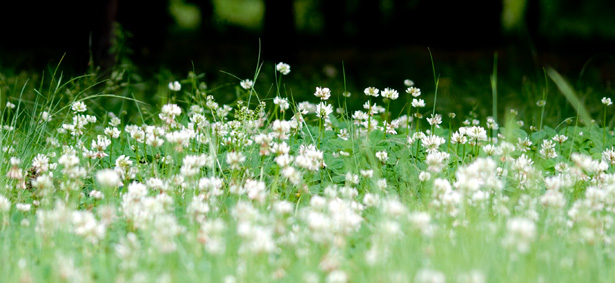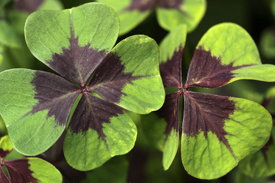That Four-Leaf Clover You Found May Not Be a Four-Leaf Clover
Are four-leaf clovers becoming more common? That was the question put to me by a reader recently. Apparently her kids are finding four-leaf clovers on a daily basis as they walk home from school. What gives?
While it is possible that her children are simply amazing four-leaf clover finders, it’s more likely that the “four-leaf clovers” they are finding aren’t clover at all.

When most of us think of clover, we think of white clover, or Trifolium repens. It’s the extremely common clover, with little white flowers, that can be found invading lawns and open spaces around the world. (That’s white clover in the image at the top of this post.)
White clover normally has three leaves, though mutations can result in four-leafed specimens. These mutations are uncommon, with only about 1 in 10,000 white clover plants having four leaves. However, in 2009, South Korean researchers reported that they were able to induce higher rates of four-leaf mutations by exposing the plants to low levels of radiation during pollination.

Since irradiated clover is unlikely to crop up alongside the sidewalks of central North Carolina, it is probably not responsible for the four-leaf clovers being found by our curious reader and her kids.
“However, there are also a number of plants that look like clover and have three or four leaflets,” says John Dole, head of the Department of Horticultural Science at NC State University. “In particular, Oxalis tetraphylla (also known as O. deppei) has spread from cultivation and I have seen it in various places, including the woods near my house. It has four leaflets and is actually known as four-leaf clover in some places.”
O. tetraphylla is also known as four-leaf sorrel or Iron Cross, and it does look a lot like a four-leafed white clover. The primary difference is that the center of O. tetraphylla is often tinged with purple – and it does not produce the white flowers we normally associate with white clover.
I couldn’t find any reports on whether O. tetraphylla is just as lucky as a four-leaf clover.
- Categories:


